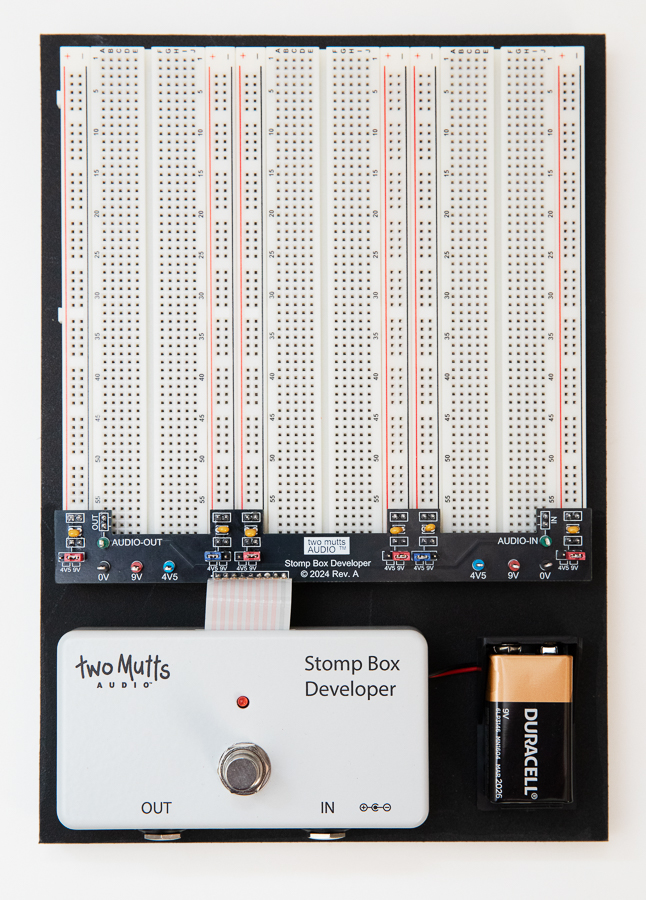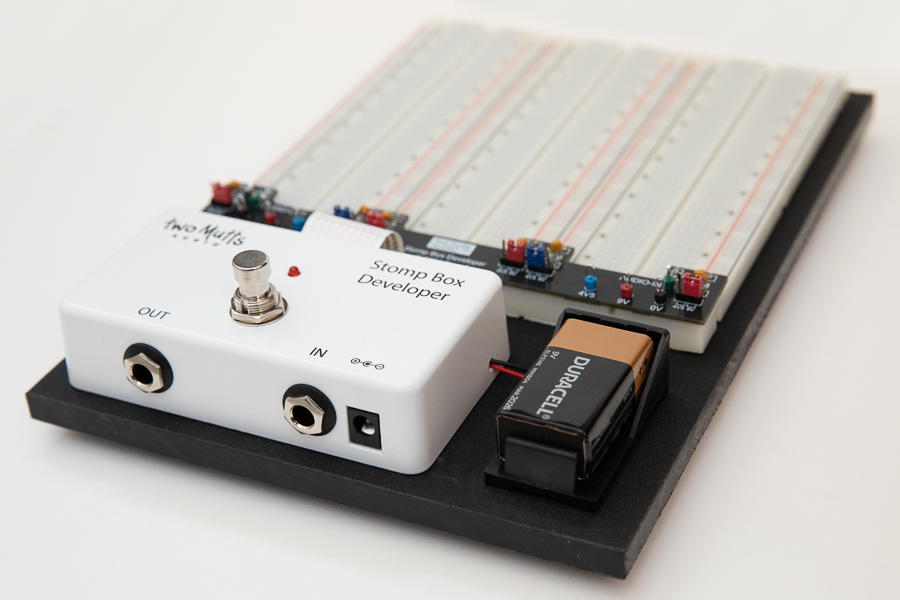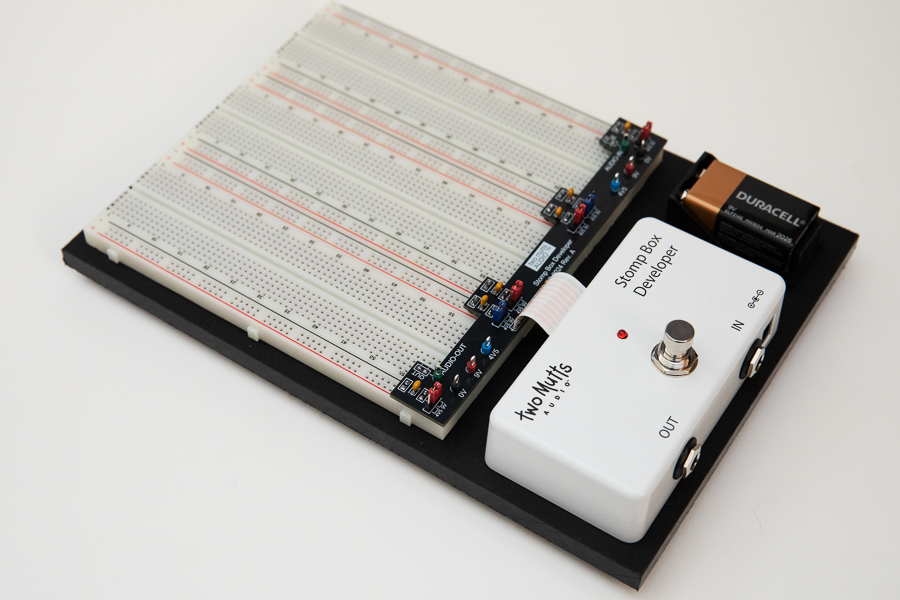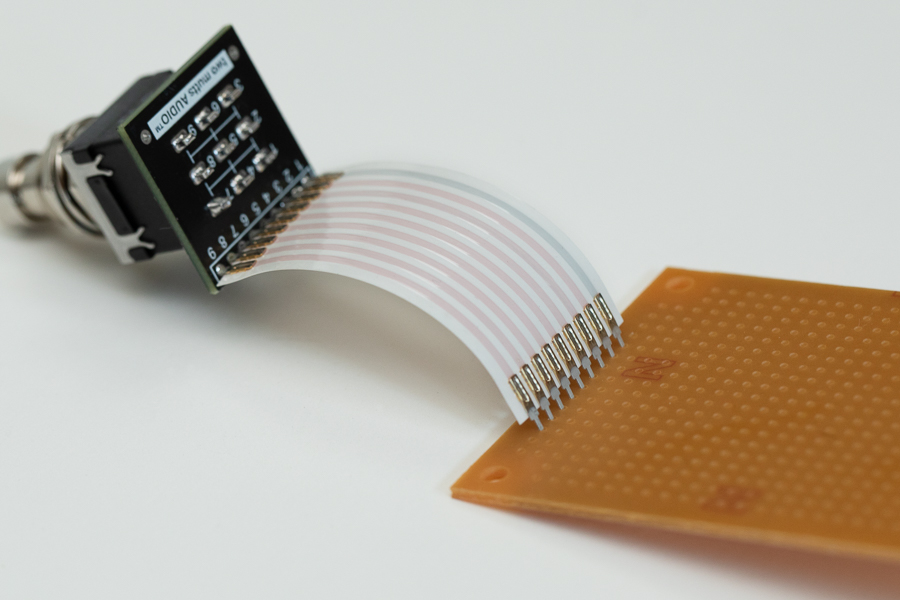When I started building and experimenting with guitar effects circuits, I quickly found commercial breadboards to be too limiting. Assembling circuits on the bench was fine, but adding reliable audio connections was difficult, never mind taking the circuits from the bench to the floor to play with them!
My original solution is detailed in this older blog post. I basically created the bare-bones of a pedal utilizing all the parts that would give me a robust platform. This DIY version proved to be very useful, and I made several that I am still using.
Yes, I’m an engineer who knows all about feature creep(!), and considered adding a myriad of additional switches, pots, LEDs, MCU and display to measure power yadda yadda… but restrained myself and kept it to the essential minimum!
So why the update!? I started building and selling these dev boards, and the demand was gratifying, but took a long time to hand assemble, so I decided to refresh the design and productize what I could to minimize build time and make them more cost-effective.
Enter the Stomp Box Developer!

The main attraction is still the highest quality breadboard, now bigger – a massive BusBoard Prototype Systems (BPS) 2930 point board with 6 power rail pairs. It’s easy to use, high quality, reliable and if damaged, the design allows the breadboard, or a board-part, to be replaced.
I improved the plug-in power PCB to add power rail options – every positive rail can be either 9V or 4.5V or isolated to use for your own biased or negative rails… And there are secure test points (loops) to reliably connect probes to grounds, power rails and signal in and out. DC input voltage can be up to 18V – the split rail will track at a simple half of the input voltage.
The main 1590B enclosure now holds a PCB so there’s no hand-wiring at all in the build – with a nine way ribbon cable connecting the two PCBs.

Inside the enclosure is a typical true-bypass switching circuit using a quality Alpha 3PDT switch, with a filtered cap circuit for the LED indicator (won’t pop!) plus a PFET circuit to provide reverse polarity protection, with minimal voltage drop.
KISS and clean were the overriding goals, and I’m pleased with the result.



I’m working on a video and blog about how I use the Stomp Box Developer to perform audio tests, and A/B tests of my circuits against prototypes and production units – my own and others – just like a professional mixer references commercial tracks when mixing!
The boards are available to buy in the store, as are these 3PDT true bypass switch kits I created using the same switch and cable, to assemble prototypes faster, with minimal hand wiring.

